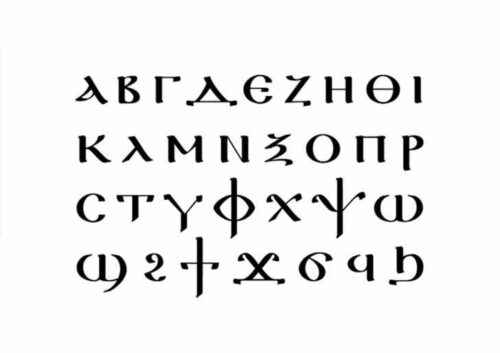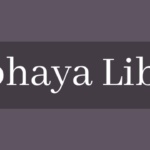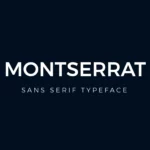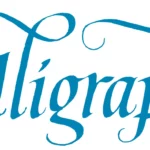Choosing the Best Egyptian Font
Egyptian fonts boast an extensive cultural legacy and make an attractive choice for various design projects. Determining the optimal Egyptian font depends on various considerations such as aesthetics and legibility. So, you can download the latest version of Ancient Egypt Font from below.
Pyramid Leopatro offers an appealing blend of modern and simple styling, adding an elegant flourish to your designs. Its immaculate lines and svelte curves will complement logos, branding elements, magazine layouts and product packaging projects beautifully.
Hieroglyphs
Hieroglyphs are pictures that function much like alphabet letters: they’re arranged in rows or columns and can be read either from above or below, making reading hieroglyph lines easy and allowing one side or another to do their reading. Differentiation between hieroglyphs lines also depends on their directions of facing; human and animal symbols typically face towards the beginning of a line while hieroglyph lines with differing content may also differ by having upper contents taken precedence over lower ones.
There are three kinds of hieroglyphs: phonetic glyphs, logographs, and determinatives. Phonograms represent sounds; for instance, folded-cloth glyphs symbolize consonants like /s/ while door-bolt glyphs serve as an ideogram for verbs like “direct” or “drive.” Finally, determinatives provide further elaboration by drawing pictures to narrow down meaning.
From designing book covers and corporate presentations to adding hieroglyph symbols for added drama, Egyptian fonts add the perfect authentic touch. When choosing one for your design project, ensure it matches its theme while remaining readable across sizes and devices. Furthermore, including hieroglyph symbols can create an evocative piece of art.
Style
Napoleon returned from Egypt raving about its amazing culture, boasting about the Rosetta Stone that featured writing in three different scripts. This stone slab became one of his prized possessions after returning home. This breakthrough marked a dramatic advancement, enabling people to decipher hieroglyphs for the first time ever and sparking Egyptomania across Europe and America – leading to numerous typefaces inspired by Egyptian design and art. Vincent Figgins introduced the first slab serif, or Egyptian typeface in 1815. This eye-catching font featured less curvature in its serifs than traditional types; quickly becoming popular early in the 19th century alongside larger-scale advertising and helping distinguish adverts from print materials.
Bodoni Egyptian by Nick Shinn also captures the visual language of ancient Egypt through its structure and aesthetic. Bodoni Egyptian’s bold yet elegant style works well for posters and magazines alike.
Hodgeson combines Egyptian art with contemporary design elements for an impressive font; similarly, Newston captures Egyptian elegance through sleek serifs while Qaripon adds exotic mystery with its intricate glyphs and mysterious design elements. All three can be downloaded for free from Egypt-themed font libraries online.
Phonograms
For centuries, scholars have been transfixed by the ancient Egyptian hieroglyphs writing system. Not only are the symbols beautiful and complex; but they also represent an entire language that has been deciphered successfully. Glyphs can be divided into three distinct categories; ideograms, phonograms, and determinatives (Middle Egyptian onward).
Ideograms are symbols that symbolize objects or actions instead of words; for instance, the symbol for “house” resembles its object closely. A filling stroke on any glyph signifies that it can be read phonetically; conversely, if any vertical stroke exists then this indicates it should be treated as a determinative and its pronunciation should coincide with that of its logogram counterpart.
Phonetic hieroglyphs can be used to spell out words by their sounds, similarly to how letters function in alphabets. For instance, the letter D21 represents the sound ‘r’ while its determinative symbol for “Ramses”, displayed at the bottom of this page is written as N5.
In the 7th century BCE, an abbreviated form of hieroglyphs sans pictures called demotic was developed for formal inscriptions and eventually replaced hieroglyphs as an everyday writing medium. Early examples can be found on cylinder seals that sealed jars; they included names and designations of those responsible.
Symbols
Ancient Egyptians employed numerous symbols as part of daily life. Each had an associated symbolism related to life, death, love, protection, regeneration, healing and power – as well as providing continuity from generation to generation in passing along their beliefs.
The bennu bird was an integral symbol in ancient Egyptian religion and mythology. Believed to symbolize a rising sun, it was often connected with Ra and Heliopolis – the city of the sun. Displayed alongside an ankh as an indicator of immortality, its significance could not be underestimated.
Shen, or a knotted circle, was another important symbol. It represented eternity, completeness, and protection – often associated with Osiris through his ankh and djed pillar. Additionally, Isis revered the shen as it stood for fertility, motherhood, and healing.
Ancient Egyptians took great strides to ensure the safe journey of their pharaohs into the afterlife by mummifying and including hieroglyphics in their tombs. While this took decades for anyone to decipher these symbols, eventually French linguist Jean-Francois Champollion discovered hieroglyphs were composed of both phonetic and ideographic signs; his work led to the Rosetta Stone discovery which allowed archaeologists to translate texts written by ancient priests. So, thank you for downloading the official version of Ancient Egypt Font Free from here.







